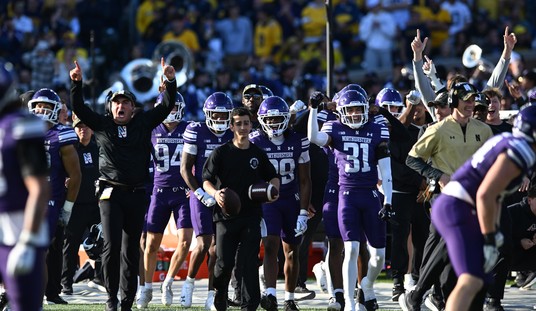Now has the summer of our middling economic content extended into the autumn. Job creation in September continued its slowing pace, only adding 136,000 jobs to the US economy, while wages stagnated. The good news is that the unemployment rate dropped to 3.5%, a change made even better since it isn’t tied to any exodus from the workforce:
The unemployment rate declined to 3.5 percent in September, and total nonfarm payroll employment rose by 136,000, the U.S. Bureau of Labor Statistics reported today. Employment in health care and in professional and business services continued to trend up. …
In September, the unemployment rate declined by 0.2 percentage point to 3.5 percent. The last time the rate was this low was in December 1969, when it also was 3.5 percent. Over the month, the number of unemployed persons decreased by 275,000 to 5.8 million. …
The labor force participation rate held at 63.2 percent in September. The employment-population ratio, at 61.0 percent, was little changed over the month but was up by 0.6 percentage point over the year.
The last time the unemployment rate hit 3.5% was when Richard Nixon was in his first year as president, CBS’ Mark Knoller observes. That’s unquestionably good news, as is the fact that it didn’t take a drop in the workforce numbers to achieve it. The Household survey does have some odd anomalies that might have contributed to it, such as a drop in 275K in the unemployed and an addition of 391K in the employed categories, which should have needed an additional 400,000 jobs or so to accomplish from the Establishment survey. However, it’s the civilian labor force number alone that provides the denominator for the U-3 measurement, and that looks relatively stable at +117,000.
The BLS provided more good news in the revisions, which added 45,000 jobs to the previous two months. As their chart shows, however, that’s not enough to move any of the last six months above the maintenance level for keeping up with population growth:

Job creation has been slowing since late last year, which makes the warning signs on wages look more ominous. Hourly earnings dropped slightly in September and hours didn’t expand, suggesting that the market has at least temporarily become static:
In September, average hourly earnings for all employees on private nonfarm payrolls, at $28.09, were little changed (-1 cent), after rising by 11 cents in August. Over the past 12 months, average hourly earnings have increased by 2.9 percent. In September, average hourly earnings of private-sector production and nonsupervisory employees rose by 4 cents to $23.65. (See tables B-3 and B-8.)
The average workweek for all employees on private nonfarm payrolls was unchanged at 34.4 hours in September. In manufacturing, the average workweek and overtime remained at 40.5 hours and 3.2 hours, respectively. The average workweek of private-sector production and nonsupervisory employees held at 33.6 hours. (See tables B-2 and B-7.)
That annual wage-growth number is the lowest in 14 months, CNBC noted. Until now, the continued growth in wages appeared to indicate a healthy job market. This is only one month, but it’s still a warning about what the impact of a low-job-creation environment will eventually produce. The Trump administration needs that wage growth to keep pace in order to maintain consumer confidence and its political support.
CNBC’s Jeff Cox reported the results as a seriously mixed bag for the economy:
The jobless rate dropped 0.2 percentage points to 3.5%, matching a level it last saw in December 1969. A more encompassing measure that includes discouraged workers and the underemployed also fell, declining 0.3 percent points to 6.9%, matching its lowest in nearly 19 years and just off the all-time low of 6.8%.
Also, the jobless rate for Hispanics also hit a new record low, while the level for African Americans maintained its lowest ever.
At the same time, the economy saw another sluggish month of growth. The nonfarm payrolls count missed the 145,000 estimate from economists surveyed by Dow Jones; the expectation on the jobless rate was to hold steady at 3.7%.
Wages also were a disappointment, with average hourly earnings little changed over the month and up just 2.9% for the year, the lowest increase since July 2018.
The AP’s Christopher Rugaber writes that this sense of slowing down has already begun to impact consumer behavior:
The job market is the economy’s main bulwark. As long as hiring is solid enough to keep the unemployment rate from rising, most Americans will likely remain confident enough to spend, offsetting other drags and propelling the economy forward.
But a slump in hiring or a rise in the unemployment rate in coming months could discourage consumers from spending as freely as they otherwise might during the holiday shopping season.
Consumers are still mostly optimistic, and their spending has kept the economy afloat this year. But they may be growing more cautious. Consumer confidence dropped sharply in September, according to the Conference Board, a business research group, although it remains at a high level.
Americans also reined in their spending in August after several months of healthy gains. The 0.1% increase in consumer spending that month was the weakest in six months.
At some point, Donald Trump may have to decide which is more important to his re-election chances — winning a long trade war with China or a revitalized job-creation market with a jump in wages. That point is rapidly approaching.







Join the conversation as a VIP Member